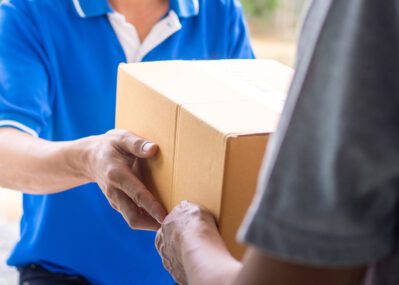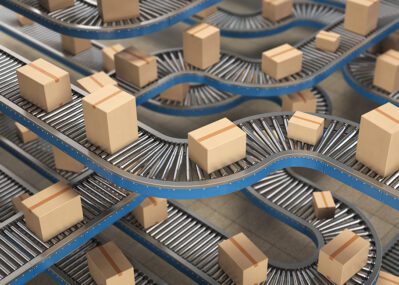
Fact: When it comes to environmental sustainability in packaging materials, corrugated stands alone.
What makes corrugated one of the most sustainable packaging materials available?
- In 2020, approximately 89% of all corrugated products were recovered and directed into the recycling stream.*
- On average, newly manufactured products industry-wide contain about 52% recycled fiber, which includes both post-consumer fiber and material recovered and recycled within the manufacturing process.**
These are impressive numbers, but they’re only part of the story. Corrugated’s carbon footprint is exceptional because of a life cycle approach from forest through recycling. Corrugated is the most sustainable packaging material on the planet because of:
- Managed forestry—corrugated is made from renewable raw materials.
- Renewable resources—paper mills can generate energy from byproducts of the paper manufacturing process.
- Continuous recycling—the fiber in corrugated is recyclable once a box has been used.
“Virtually everything can be recycled, but in order for it to be worth reclaiming, you need enough volume and buyers for the materials,” says Michael Manney, Senior Director of Corporate Sustainability and Environmental, Social & Governance. “There’s a strong demand for recovered corrugated all over the world, especially in areas where they don’t have sustainable forestry like we do in the U.S.”
1. Managed Forestry—The Renewable Crop
Often, sustainability discussions about paper use revolve around “saving trees.” While that may be a useful tactic to raise awareness for irreplaceable forests like the redwoods of California or the rainforests of South America, it’s a marketing gimmick that actually hurts most forests in the long term. PCA focuses on sourcing virgin wood fiber from working forests that are managed to produce timber for forest products. Demand for this timber helps keep forests as forests, because around 90% U.S.-sourced wood fiber comes from private landowners who have the option to convert their land to another use if they do not get a financial return for their investment.
What are working forests? According to the World Resources Institute, they’re forests that are actively managed to generate revenue from multiple sources, including sustainably produced timber and other ecosystem services, and are not converted to other land uses like residential development. This approach ensures that clean air and healthy forests are there for future generations. According to the U.S. Department of Agriculture, managed forestry practices have been so successful that U.S. forestlands have increased by 60% in the past 60 years. In the last 10 years alone, more than 13 million acres have been added.
“It comes down to this: We are never going to grow more land, so what we do with it is what our legacy will be,” says Rebecca Ensign, PCA’s Woodlands Environmental Manager. “If we are not taking care of the land, it will show.”
Ensign, a passionate PCA forester for 14 years, spent half of her career in Michigan’s woodlands monitoring harvesting practices, understanding how to preserve forestland and training loggers to comply with Sustainable Forestry Initiative® (SFI) Standards. SFI is an independent, non-profit organization that collaborates with a diverse network to provide solutions to local and global sustainability challenges.
According to Ensign, “PCA adheres to strict procurement requirements to address and protect the quality of soil and water and the risks associated with forest biodiversity, wildlife habitats and high conservation values.”
2. Renewable Resources Produce Energy
As of 2020, more than 61% of all energy used by PCA’s manufacturing facilities comes from renewable resources. Here are a few success stories that have moved PCA closer to becoming energy independent:
- Valdosta, Georgia—This paper mill self-generates 85% of its electricity. Recent upgrades at this mill have included replacing three old recovery boilers and the installation of a new turbine-powered generator.
- Counce, Tennessee—Three major updates significantly reduced purchased energy. The project entailed upgrading two boilers to be more energy efficient and installing a new turbine-powered generator.
- Tomahawk, Wisconsin—Methane gas from a wastewater treatment lagoon is captured and used as renewable fuel. This also reduces greenhouse gas emissions into the atmosphere.
- Filer City, Michigan—The installation of a boiler that combusts wood waste and other fuel types to power the mill has significantly reduced fossil fuel consumption.
“What allows us to stay ahead is our people. We have the best engineering talent in the industry,” Manney says. “We put a lot of capital into our operations, and that’s not going to change anytime soon. We have ambitious goals and innovative ideas of how to get there.”
3. Recycling—Rinse, Repeat, Reuse
Nearly 90% of corrugated products are reclaimed and recycled, and most recycled containerboard comes directly from the supply chain.
“More than 90% of all corrugated materials recovered reach the end of their journey in commercial or industrial settings. This results in the corrugated getting baled, which essentially eliminates the need for costly sorting at a materials recovery facility like you have in residential programs,” Manney says. “Because of strong demand for old corrugated containers (OCC) and the ease of collection, it’s a win for everyone in that value chain.”
How is all that recycled material used? Approximately 55% is directly used for manufacturing new corrugated boxes and containers. The other 45% is used in two ways: producing other paper products (including packaging) and exporting fibers to countries that don’t have access to wood fiber.
Manney is often asked why containerboard isn’t made with 100% recycled content. He says there is really only one reason—without virgin fiber constantly entering the paper manufacturing process, we would run out of recycled fiber. That’s because up to 80% of all fiber is lost after two collection and processing cycles due to leakage from the system and the fact that some recovered fiber is put to other uses. Additionally, fibers get too short and brittle to bond to other fibers after being pulped again and again (up to seven times). Without virgin fiber, the system would collapse in a matter of weeks.
The Stamp Tells the Story
The easiest way to see that PCA conforms to its sustainability promises is to look for the stamp printed on its corrugated containers.
All box plants are eligible to print the SFI® Certified Sourcing label on their corrugated products. This stamp certifies that PCA’s fiber procurement practices meet stringent sustainability standards year after year. And even containers without the printed stamp meet SFI standards.
“Think of all the resources it takes to make something. If a product gets damaged, all of those resources that were consumed are wasted,” Manney says. “The best thing we can do to help our customers meet their sustainability goals is to reduce product damage while assuring them that our products are made from materials that are sourced responsibly and sustainably.”
Learn how our sustainable packaging can help meet your environmental goals.
*Source: American Forest & Paper Association, 2021
**Source: Fibre Box Association, 2021


